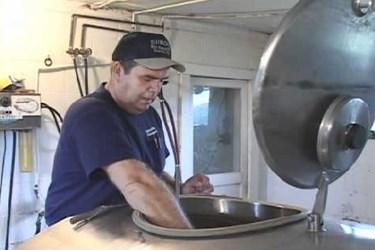Are Your Blend Sampling Practices Effective?
By Melissa Lind, contributing writer

If you are using powder blends as part of your food manufacturing process, performing routine sampling of the blend to maintain quality assurance is essential. Chosen sampling technique can be the difference between really knowing that blending processes are good and being way off the mark.
Many manufactured food products require the blending of dry, bulk ingredients as part of the final recipe. Whether your company uses powder blends as a flavoring or uses blended ingredients as part of an integral baking process, your company’s product must be uniform to maintain its reputation and profitability.
To ensure the end product is uniform, not only do blending and manufacturing processes have to be undeviating, the sampling procedures for blended ingredients have to be accurate and consistent. Below are a few tips that can help ensure your blended ingredient sampling procedures are leading to consistent end products.
Perfect Blends Don’t Always Equate To Perfect Products
As part of the quality process, a consistent blending process is a must, but that isn’t the end. Blending processes need to be checked to ensure that settling of heavier or bulkier components doesn’t occur in the manufacturing process. In order to confirm that isn’t happening, blends must be sampled routinely during blending, during discharge, and at the final stage of production.
Be Careful With Sample Thief Results
A sample thief is a small tube with closable cavities that is inserted in a vessel containing blended ingredients. The tube is inserted with cavities open, which allows material to flow into the tube. The cavities are then closed, and the tube is pulled out with the sample in the tube. This system provides great opportunity for inaccuracy as the product isn’t moving, each component may not have the same flow properties, and results are highly variable depending on operator technique. Using a thief sample isn’t totally useless but it can be problematic. Irregularities should be carefully considered as results may be inaccurate.
A Stratified Approach Can Improve Thief Sampling
Thief sampling can be made much more accurate if multiple samples are taken. A minimum of three, preferably five, samples should be taken from the same location. The multiple-sampling procedure should be repeated at different locations, with particular attention paid to areas that may be “dead zones.” Stratified sampling can also help determine if techniques are bad or if the blend is not good. If samples vary at a single location, the problem is likely technique. However, if samples taken at different locations are variable, the blend may not be uniform.
Full-Stream Sampling Can Provide A True Sample Reading
The most-reliable sampling method may be full-stream sampling which collects material in motion. This method is more likely to provide a better a picture of the blend’s uniformity. However, the downfall of full-stream sampling is that it is usually a discharge sample, so re-blending may not be an option if the blend is not on target.
Handle Collected Samples With Care
Once a sample has been collected, ideally, its entirety should be analyzed. This prevents the possibility of settling in the sample container. If this isn’t possible, a rotary splitter can be used which will guarantee that different sized and weighted particles will be evenly distributed.
